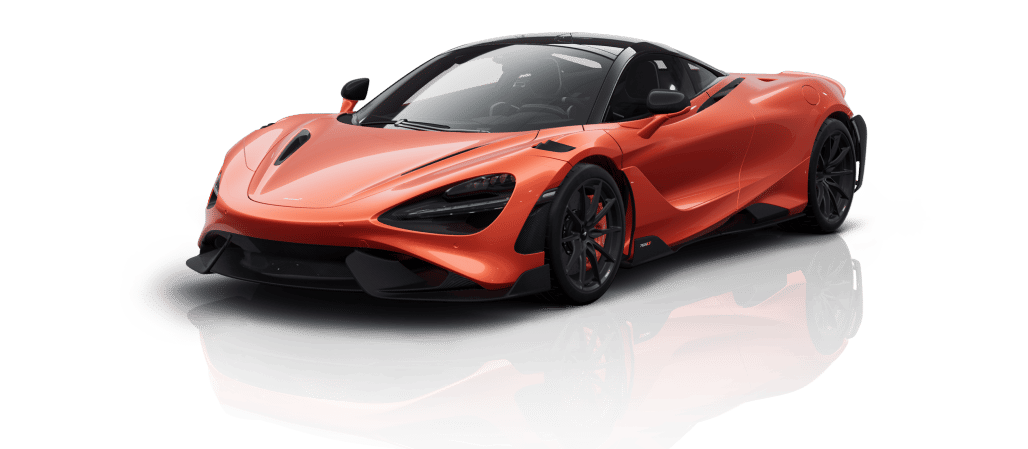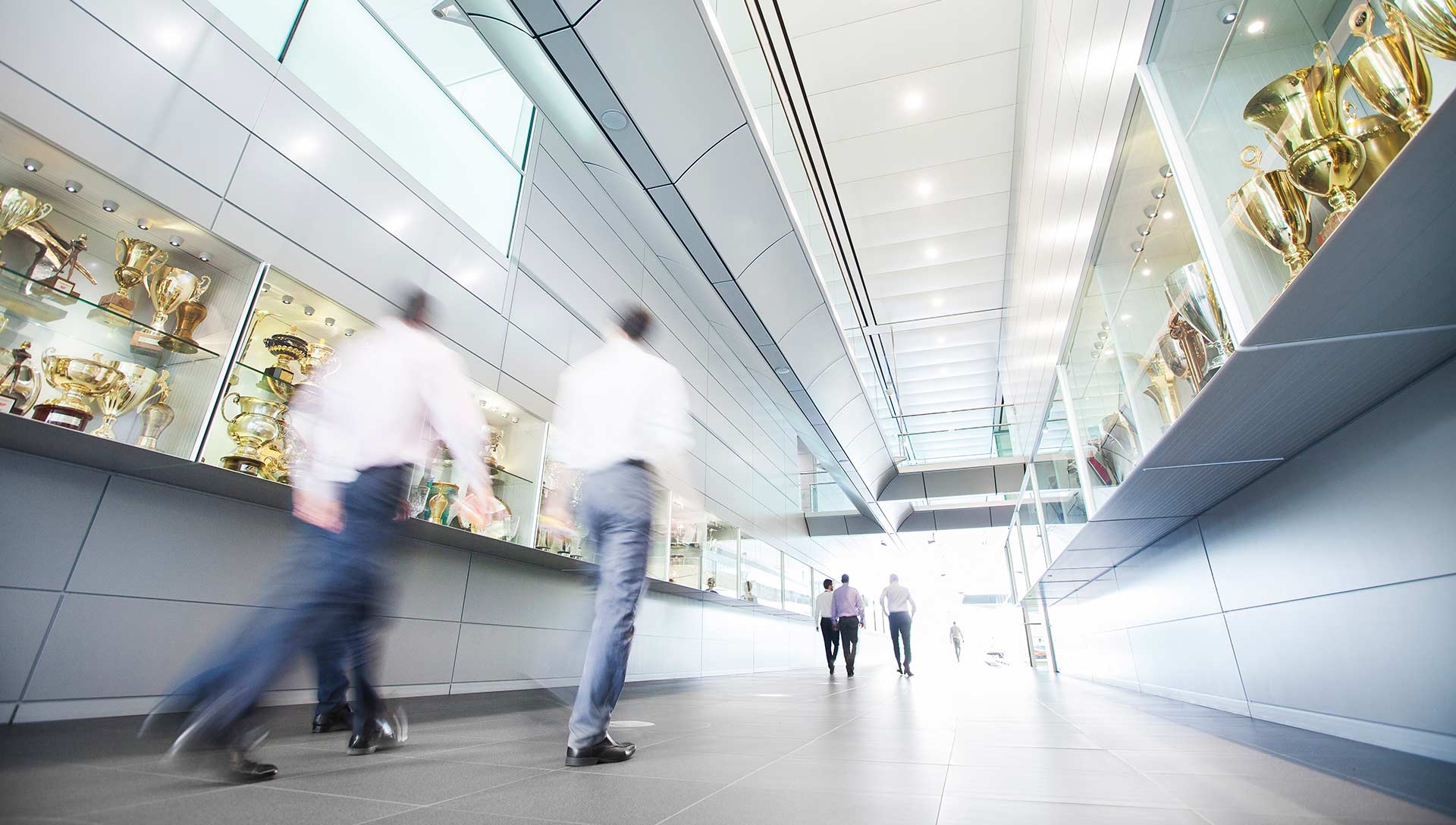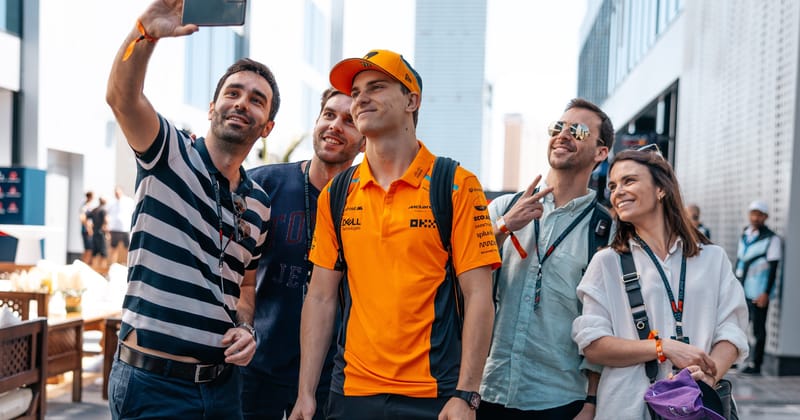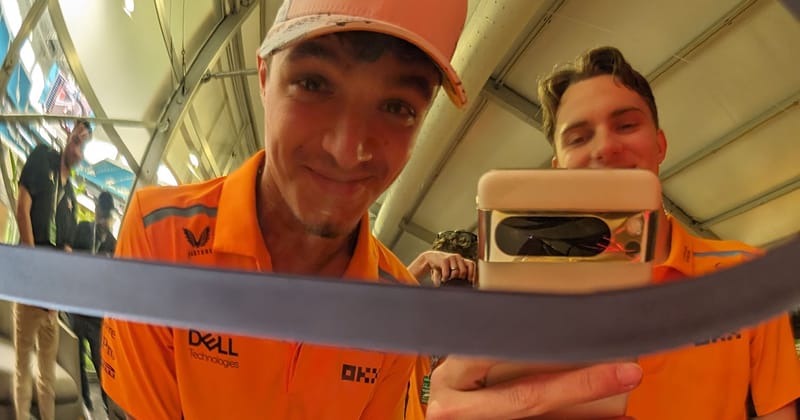
The Abu Dhabi GP briefing - powered by Google Cloud
Unrepresentative session times, selecting our setup, and optimising one-lap pace: breaking down this weekend’s key themes

Welcome to The Briefing, where you can get a jumpstart on the Abu Dhabi Grand Prix with our guide to the key topics.
Every race weekend, we’ll speak to one of our engineers to discuss the key talking points ahead of the upcoming Grand Prix and simplify them so that you can dive straight into the action with a better idea of what to expect and what you should be looking out for.
This week, powered by Google Cloud, Henry Fidler has joined us. How each team approaches Free Practice for the season finale very much depends on what’s at stake, and with the Championship on the line, we’ll be fully focused on this weekend, rather than looking ahead to 2025. Henry will be explaining what this looks like for us, which includes how we’ll be fine-tuning our setup and optimising our one-lap pace.
Here’s what we’ll be working on and what you need to know…

1. We’ll be fully focused on this weekend’s race
Final race of the season, and quite an exciting one for us. As you might expect, our focus this weekend is very much on race preparation. Our practice sessions will be about fine-tuning setup and investigating tyres. In the test next week, there’s an opportunity to learn a bit more for 2025. In Free Practice here, we’re concentrating on the Abu Dhabi Grand Prix.
Ryō Hirakawa is making his debut, replacing Oscar for FP1 - completing our requirement to run rookies in two Free Practice sessions.
2. The session times impact our testing plans
It isn’t an entirely straightforward task here because, although this is our third race under lights in a row, in Abu Dhabi, FP1 and FP3 take place in the afternoon, which means the track is very hot compared to what we’ll experience in Qualifying and the race. Those sessions won’t be great for understanding how the tyres behave, and we’ll get a better read during FP2 – but these afternoon sessions will help us determine how low and how stiff we can run the car.

3. Choosing the right setup
The new layout at Yas Marina is a medium-downforce circuit. Of the recent races, it’s probably closest to the dry setup for Interlagos, in terms of the rear wing level we’ll run. The middle part of this lap is essentially just two very long straights split by a chicane. That makes the track pretty sensitive to drag.
Tyre choices are interesting here. We have the same compounds as last year where most cars did two stops – but of those that did a one-stop race, some cars made it look attractive, and others did not. Given the way 2024 has progressed, it’s very difficult to judge which is the better option. We’ll be keeping an open mind and looking to develop some answers during the practice sessions.
It’s a reasonably smooth circuit, very low warp, which means you want to have the car pretty stiff and low. The limitation will be the kerbs that you have to use in the Turn 6, Turn 7 chicane. There’s also a couple of bumps through Turns 2 and 3, where the car will be flat in Qualifying, that may also limit what we can do.
Additionally, porpoising was a topic in Qatar and there’s potential for it to also be a factor here, which is something we’d like to learn about - ideally in FP1 so we can maximise our tyre learning in FP2.

4. Working out how to optimise our single-lap pace
We also want to work on our single-lap pace. Yas Marina is a tricky circuit for a Qualifying lap. On the original circuit, rather like Barcelona, you needed to look after the rear tyres in the first half of the lap, to have good performance in the final sector around the hotel. It’s not quite so extreme now, with the new layout, but it’s still a factor. We saw it last year where Lando had a rear snap in the fast Turn 9, and paid for it in the final corners. There’s definitely a tyre budget to figure out.
We know the tyre isn’t great for a second push lap, because you simply can’t cool it down fast enough – but we’ll be keen to find out if you can improve after a poor first lap, and what the offset is between starting a session with a new or a used tyre. This is the sort of work we’d usually do in FP3 – but given the temperature differentials, this is a circuit where that work often gets pulled forward into our cooler practice session.

Find your competitive edge with Google Cloud
And that’s pretty much it! While there is a lot at stake, the plan this weekend is very much the plan you’d expect to see if you’ve read these notes from previous races. We’ll be following the same steps that have got us here, trust in the process that has done a good job so far. We’ll focus on the work, do our own thing and let everything else take care of itself.
McLaren Racing leverages Google Cloud AI to gain a competitive edge by visualising race data to provide real-time insights, and creating efficiencies across processes and resources.
Recent articles
All articles
F1's ultimate rivalry: McLaren and Ferrari

Rookie drivers announced for FP1 and the Young Driver Test in Abu Dhabi

Your guide to the Abu Dhabi Grand Prix – Presented by OKX

2024 Qatar Grand Prix – Race report

Inside the role of an F1 sim driver

How we use Dell Technologies’ AI Factory in-session

In conversation with Lando and Oscar






